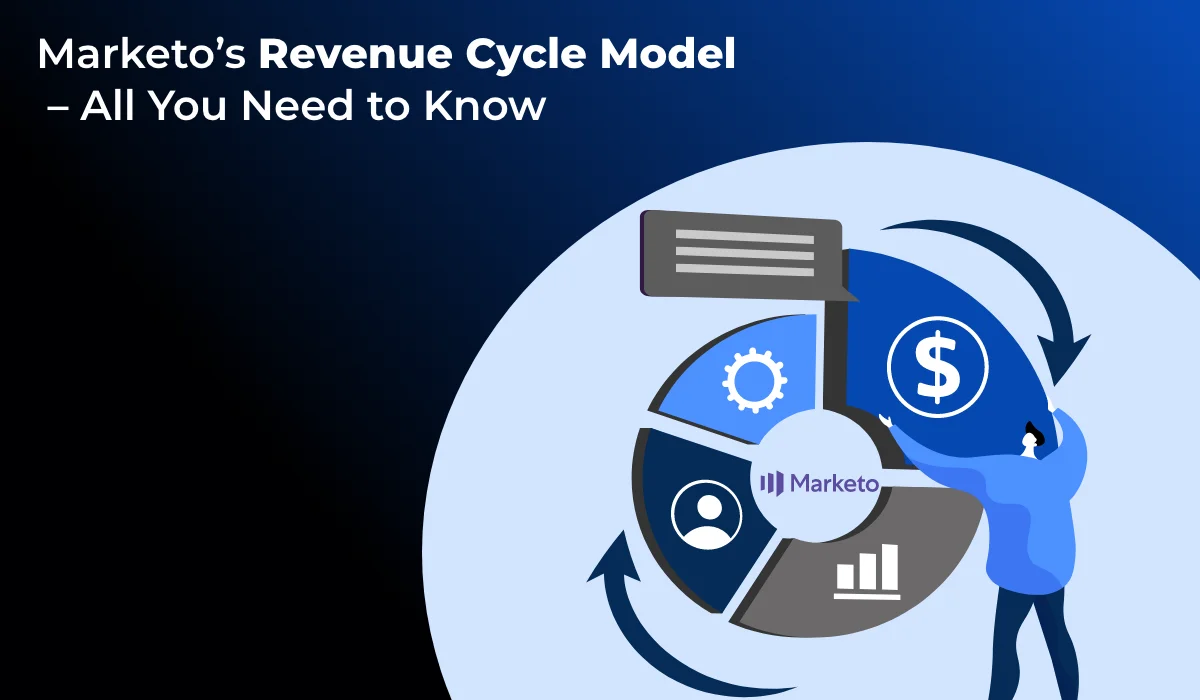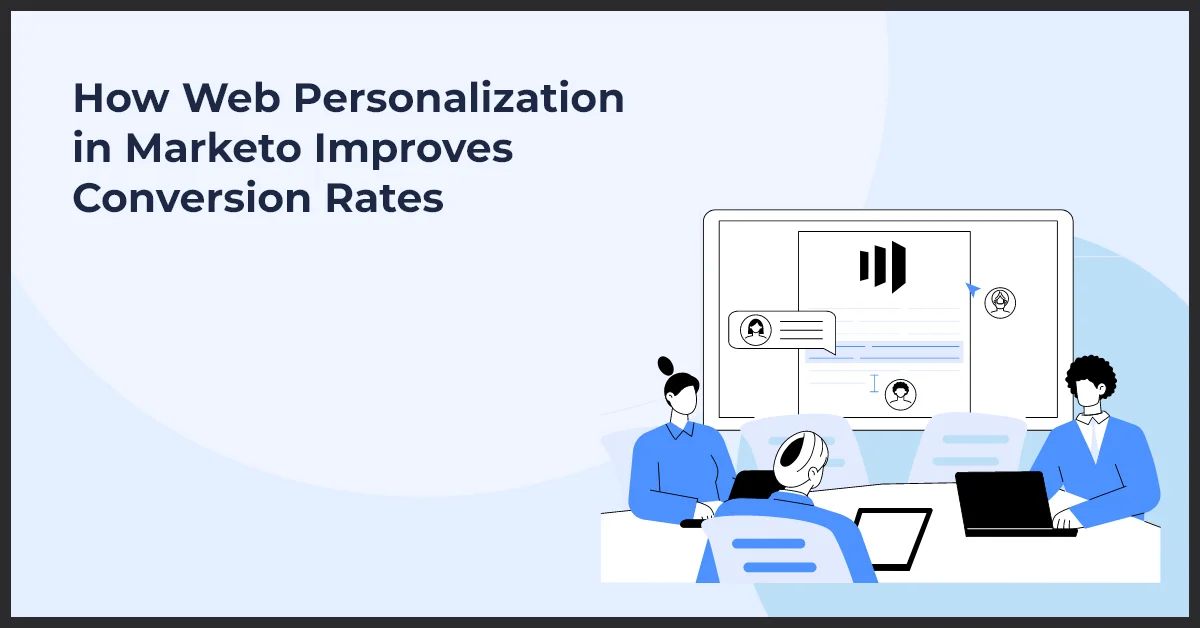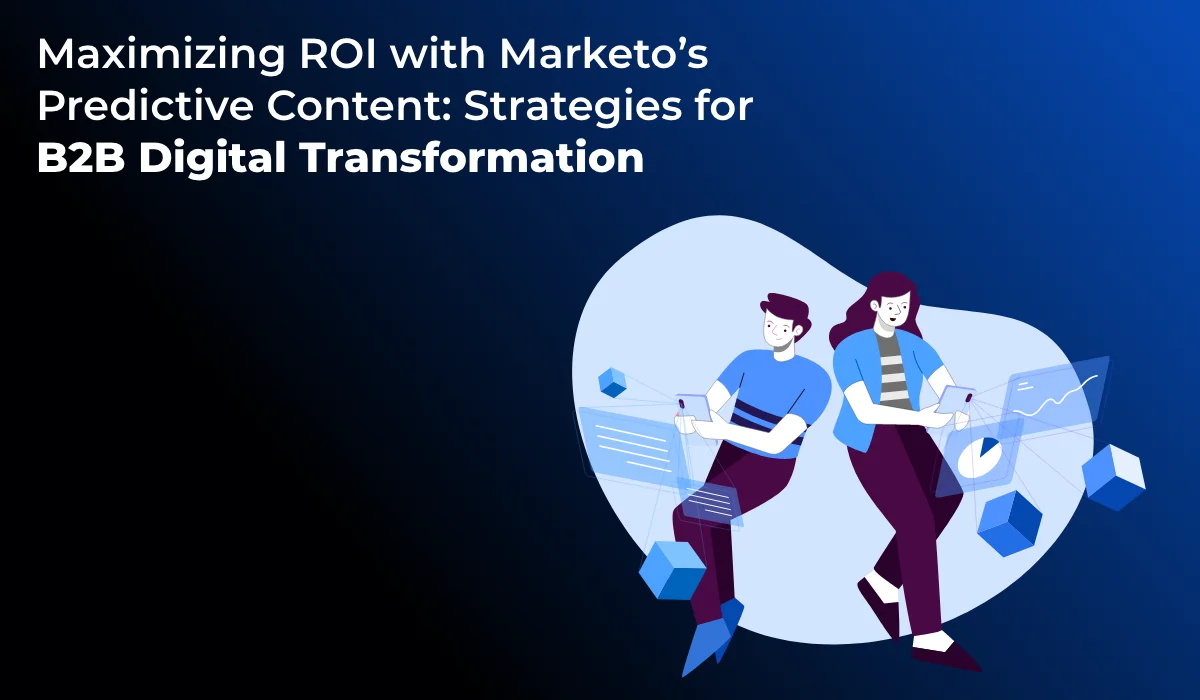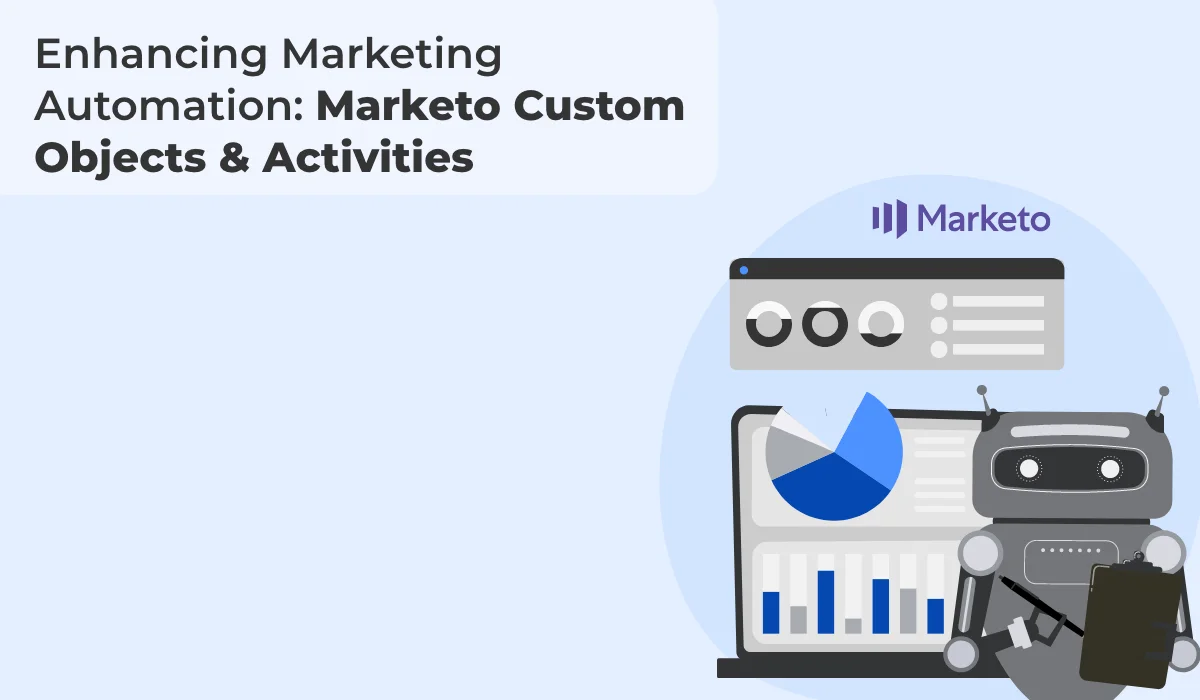Marketo’s Revenue Cycle Model: A Comprehensive Guide to Optimizing Your Sales Funnel

Published on: April 11, 2023
Updated on: February 24, 2025
2255 Views
- Marketo
9 min read
In the dynamic world of modern business, where customers have more choices and information at their fingertips than ever before, a comprehensive revenue cycle model is the key to unlocking sustainable growth.
Enter - Marketo! It offers a game-changing approach to revenue maximization through its Comprehensive Revenue Cycle Model (RCM).
At the heart of Marketo's strategy is the alignment of marketing and sales efforts, transforming them from siloed functions into a harmonious revenue-generating machine.
This model maps out the entire customer journey, from the first touchpoint to the final sale and beyond. It's not just about generating leads, it's about nurturing them at every stage, ensuring that no potential customer falls through the cracks.
So, let's dig into the strategies and tactics that make Marketo's Revenue Cycle Model a true game-changer.
How does the comprehensive revenue cycle model in Marketo enhance marketing and sales efforts?
The comprehensive revenue cycle model in Marketo enhances marketing and sales efforts by providing a structured approach to managing and optimizing the entire customer journey. This model integrates lead management, including lead generation, scoring, and nurturing, ensuring that prospects are effectively guided through the sales funnel. Automated workflows streamline repetitive tasks and personalize communication based on lead behavior and engagement. The model also includes analytics and reporting, offering insights into campaign performance and customer interactions, which helps in refining strategies and improving ROI. By aligning marketing and sales activities with the revenue cycle model, businesses can drive better results, improve lead conversion, and optimize their overall sales process.
Understanding Marketo's Revenue Cycle Model
A revenue cycle model is a framework that assists companies in optimizing their revenue production process. It describes the stages of the customer journey, from early awareness to post-purchase loyalty, and gives a road map for engaging with consumers at each point to achieve revenue development.
Its prime purpose is to give a systematic method of revenue creation that can be optimized and enhanced over time. Businesses may design a more successful marketing plan and drive revenue development by knowing the various stages of the customer journey and the methods that are most effective at each level.
Stages of Marketo’s Revenue Cycle Model
Marketo's Revenue Cycle Model consists of several stages that map out the customer's journey from initial contact to becoming a closed deal. These are:
Attract
This stage focuses on bringing new clients to your company via various marketing platforms. The objective is to build awareness and interest in your company and its products or services. Businesses may attract potential clients who are most likely to be interested in their products or services by targeting certain demographics and interests.
Capture
The idea is to turn anonymous online users into identified leads who can be engaged and nurtured further. Businesses can use numerous strategies to gather leads, such as gated content, pop-up forms, and surveys. Businesses may grab leads and begin to create relationships with them by giving helpful content in return for contact information.
Nurture
You may move leads closer to completing a purchase by delivering relevant content and customized experiences. The aim is to develop trust and credibility by educating and informing leads about your products or services. You can employ email marketing, social media advertising, and retargeting to nurture leads.
Convert
Your goal is to convert leads into customers. This may be accomplished using a variety of strategies, including special offers, product demos, and free trials. The purpose of this stage is to create a compelling case for leads to buy and to make the purchasing experience as simple and straightforward as feasible. You can boost the possibility of a lead making a purchase by offering targeted incentives and a simplified purchasing procedure.
Expand
You may boost your customers' lifetime value by delivering great customer service and targeted upsell/cross-sell offers. The objective is to build client loyalty and stimulate repeat purchases, which will lead to revenue growth.
How Marketo's Revenue Cycle Model Helps You Improve Your Revenue Generation
Marketo's Revenue Cycle Models empower marketers to navigate the complex landscape of customer acquisition, engagement, and conversion. By understanding the components, benefits, and implementation strategies of these models, you can create a seamless and efficient customer journey that drives revenue growth and fosters long-lasting customer relationships.
Here’s how:
- Clear Visibility and Alignment: The Revenue Cycle Model brings marketing and sales teams onto the same page by providing a unified framework for lead progression. This alignment ensures that both teams understand where leads are in the buying process, enabling better communication and collaboration.
- Focused and Targeted Marketing: By categorizing leads into different stages, you can tailor your marketing efforts based on their level of engagement and readiness to buy. This targeted approach allows you to deliver relevant content, offers, and messages that resonate with each lead's specific needs and interests.
- Lead Scoring and Prioritization: Marketo's Revenue Cycle Model enables you to implement lead scoring, assigning values to various actions and behaviors. This helps you identify high-potential leads and prioritize your resources towards those most likely to convert. As a result, your sales team can focus their efforts on leads that are more likely to generate revenue.
- Effective Nurturing Strategies: The model allows you to map out the entire customer journey, from initial contact to conversion. This enables you to design personalized and targeted nurturing campaigns that guide leads through each stage, addressing their concerns and providing value along the way. Effective nurturing builds trust and increases the likelihood of conversion.
- Timely and Relevant Follow-Up: With a clear understanding of lead progression, your sales team can engage with leads at the right time and with the right message. For example, when a lead transitions from MQL to SQL, your sales team can reach out with tailored information and solutions that directly address their needs.
- Data-Driven Insights: Marketo's Revenue Cycle Model provides valuable data on lead behavior, interactions, and conversion rates at each stage. Analyzing this data helps you identify bottlenecks, optimize conversion paths, and refine your marketing strategies based on real-time insights.
- Closed Loop Reporting: Marketo’s Revenue Explorer gives businesses sophisticated reporting features that allow them to thoroughly assess their revenue performance. Businesses may use the tool to produce custom reports that present revenue data in a number of formats, such as tables, charts, and graphs.
Marketo’s Sales Insight + Revenue Cycle Model = Better ROI
Two of Marketo’s standout components for revenue streamlining, Marketo's Sales Insight (a sales enablement tool that gives access to real-time analytics regarding the engagement and behavior of their leads and customers.) and Revenue Cycle Models, have the potential to work in tandem to not only boost your ROI but also transform the way you approach lead management, nurturing, and conversion.
- Seamless Collaboration: When Marketo's Sales Insight and Revenue Cycle Models come together, marketing and sales teams work in harmony. With Sales Insights features like lead tracking allows get real-time insights into leads’ activity and lead to more effective lead handoffs, minimizing leakage and maximizing revenue potential.
- Optimized Resource Utilization: By focusing efforts on leads identified as prime opportunities by Sales Insight and Revenue Cycle Models, your teams direct their time, energy, and resources where they can yield the greatest ROI.
- Enhanced Customer Experience: The fusion of Sales Insight and Revenue Cycle Models delivers a seamless, personalized experience across the customer journey. This positive experience not only boosts conversion rates but also cultivates customer loyalty, leading to repeat business and increased ROI.
- Continuous Iteration and Improvement: The collaborative insights provided by Sales Insight and Revenue Cycle Models offer valuable feedback loops. This enables you to fine-tune strategies, make data-driven adjustments, and continually optimize your approach for ongoing ROI growth.
Real-Life Examples of Businesses That Have Implemented Marketo's Revenue Cycle Model
Now that we’ve established how you can increase your ROI by combining the strengths of Marketo’s Sales Insights and Revenue Cycle Model, let’s take a look at the companies that have implemented Marketo’s Revenue Cycle Model.
1. Adobe
Adobe, the company behind Marketo, uses its own marketing automation platform to manage and optimize its revenue cycle. By leveraging Marketo's Revenue Cycle Model, Adobe has been able to streamline lead management, track customer journeys, and align marketing and sales efforts. This has resulted in improved lead quality, shorter sales cycles, and increased revenue generation.
2. Autodesk
Autodesk, a design and manufacturing software leader, seamlessly integrated Marketo's Revenue Cycle Model. This helped them optimize their new customer onboarding. Autodesk employed targeted welcome emails and tailored onboarding tasks, accelerating new customer integration. It allowed precise tracking and measurement, ensuring timely support and a smooth client onboarding experience. This strategic alliance not only elevated client onboarding but also streamlined their internal processes, showcasing the true potential of Marketo's Comprehensive Revenue Cycle Model.
3. Cisco
Cisco, a leader in networking and technology solutions, harnessed Marketo's Comprehensive Revenue Cycle Model to drive exceptional results. By creating a single customer view, Cisco empowered its sales team with comprehensive insights, enabling personalized and timely service for consumers. Additionally, leveraging Marketo, Cisco effectively tracked and measured its sales process, ensuring adherence to successful procedures and enabling data-driven decisions. This strategic fusion of insights and measurement underscored the transformative potential of Marketo's Comprehensive Revenue Cycle Model in enhancing customer experiences and optimizing sales outcomes.
Conclusion
In a world where customer expectations are continuously evolving, delivering a seamless, tailored experience is paramount. Marketo's Comprehensive Revenue Cycle Model offers a blueprint for excellence in customer engagement. By embracing its capabilities, businesses can unlock the full potential of their revenue streams and forge deeper connections with their audience.
Marketo's Revenue Cycle Model is not just a tool; it's a strategic approach to revenue generation that empowers businesses to thrive in a competitive environment. With insights, alignment, and agility at its core, this model is the compass that guides businesses towards revenue optimization and sustainable growth.
Wish to Unlock the Full Potential of Marketo’s RCM? Talk to Us!Our Marketo-certified aces would love to help you get there. Just write to us at info@growthnatives.com and we will get back to you.
Frequently Asked Questions
Marketo defines the Revenue Cycle as the process through which leads progress from initial awareness to becoming customers and advocates, encompassing all stages of the buyer’s journey.
Marketo’s Revenue Cycle Model offers benefits like improved sales and marketing alignment, enhanced lead tracking, better revenue forecasting, and actionable insights into the buyer’s journey, ultimately driving more efficient and effective marketing strategies.
Revenue Explorer in Marketo is an advanced analytics tool that provides detailed insights into marketing performance, revenue attribution, and campaign effectiveness, helping marketers make data-driven decisions to optimize their strategies and improve ROI.
Marketo facilitates ABM strategies by enabling marketers to target and personalize communications for specific accounts, coordinate multi-touch campaigns, and measure account-level engagement and ROI.
Predictive analytics in Marketo uses AI and machine learning to identify patterns in customer behavior, predict lead conversion likelihood, and recommend optimal marketing actions to drive revenue growth.



